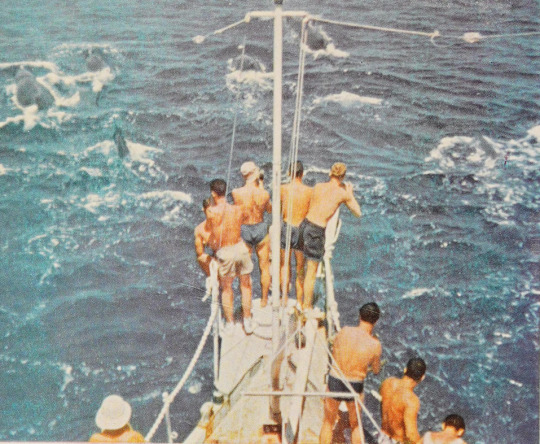#jacques cousteau
Text

French Oceanographer & Filmmaker Jacques Cousteau
118 notes
·
View notes
Photo
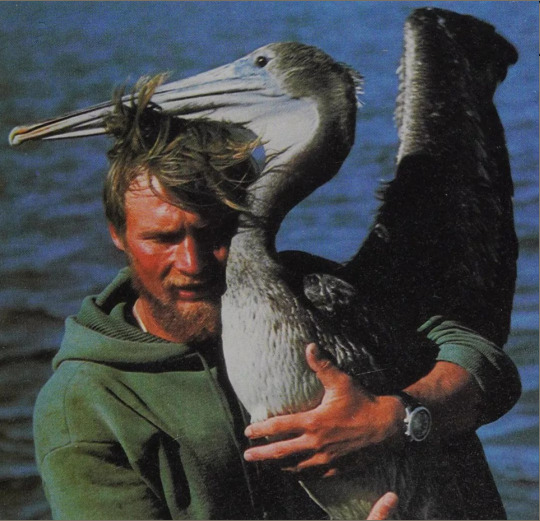
"Nos amies les baleines" de Cousteau, 1972
354 notes
·
View notes
Text
Underwater Urban Legends: Jacques Cousteau's Secret Discovery?
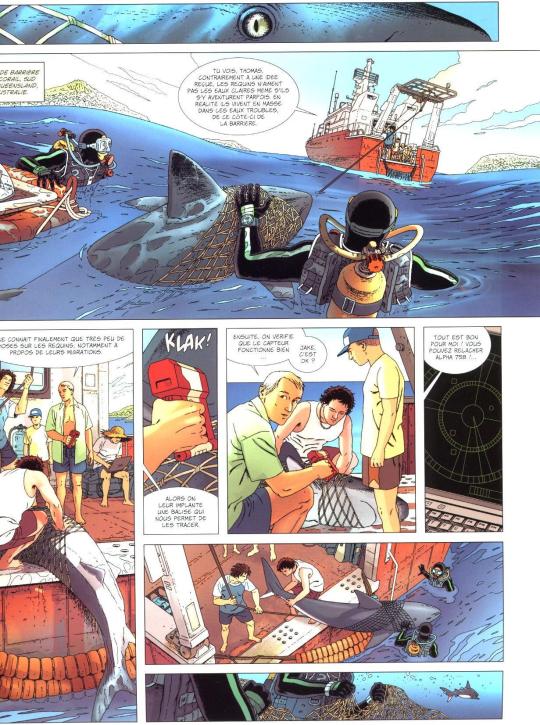
(Carthago vol. 3, “Le Monstre de Djibouti”, by Christophe Bec and Milan Jovanovic, 2013)
When I first got interested in ocean creatures as a little girl in the late 90s, we had several oversized white-covered books about Jacques Cousteau's ocean expeditions around the house that my parents let me page through, even though the text was way too small for me to read. A little later on, I read the Cousteau Society's young readers' magazine Dolphin Log/Cousteau Kids every month at the library, especially the selections from Dominique Serafini's comic book adaptations of the Calypso crew's adventures.
As an adult who's still interested in marine science, I've read several of Cousteau's books, and seen some of his documentaries. In 2019, I even got to hear his grandson Fabien speak at an event at the American Museum of Natural History.
Across film, TV, literature, comics, and even music, the Cousteau family’s underwater adventures are pretty well-documented. But one persistent bit of sea-folklore I've come across in various forms and places is an urban legend that at least one adventure wasn't. Somewhere in the world, these stories say, Captain Cousteau saw (or heard) something underwater that was so shocking that he kept it a secret from the world. (Except, presumably, from whoever is repeating the story.)
Could there be any truth behind this fantastic story? What was this "secret discovery"? And where and when did all of this happen? Like most urban legends, there are a lot of conflicting accounts and not a lot of proof.
I'd love to see a site like Skeptoid do a deep dive (heheh) into this story someday, but since they haven't yet, my research is below the cut.
A Secret Discovery?
It's alleged that after a submarine expedition, undersea explorer Jacques Cousteau said, "The world isn't ready for what's down there." (How Stuff Works)
As a reader and a writer, I have to say, this is an excellent pitch for a story. A world-famous explorer who witnessed all kinds of undersea wonders and environmental tragedies choosing to keep a remarkable discovery a secret for some unknown reason? Wouldn't you read that book? I'd read that book!
In fact, I did read that book! The French comic Carthago, first published in 2007 and translated into English in 2014, features a character based on Cousteau named Major Bertrand, a famous ocean explorer who made a discovery so shocking that he not only kept it a secret, but retired and lived the rest of his life onshore afterwards. The actual scene shown in flashback is a beat-by-beat retelling of the "Red Sea Monster" version of the story we'll discuss below. According to an interview with the comic's writer Christophe Bec, that scene (and the comic itself) were inspired by an article in the French paranormal magazine Le Monde de l'un découverte (The World of the Unknown) published in February-March 2001. That article is in French here.
Here are the broad outlines of the story as I've seen it in various places online:
Cousteau surfaces, shaken from a dive, OR
The Calypso crew recover either a shark cage that has been destroyed OR
An underwater camera or hydrophone that has recorded something
Cousteau says some variation on "The world is not ready for what I have seen"
Cousteau orders any film or audio recordings of the incident (taken by either divers, underwater equipment, or film crew aboard the ship) to be either destroyed or suppressed and hidden away in a safe
(Some accounts have people saying they actually saw the incident happen on TV, which is unlikely as I don't think any of Cousteau's documentaries were live broadcasts.)
Cousteau is so shaken by what he saw that he never returns to the site of the incident
The Red Sea Monster
The most famous and detailed version of the story, and the one Carthago adapts, sets the action in the Gulf of Tadjoura off the coast of Djibouti, near where the Red Sea meets the Indian Ocean. Investigating legends of a sea monster in a cove called the Ghoubbet al-Kharab, or Gulf of the Demons, Cousteau's team lowered a camel carcass within a shark cage. When the cage was raised, it had been badly damaged, perhaps even destroyed.

[The Ghoubbet al-Kharab is the little inland bit at left almost cut off from the sea x]
The article in Le Monde de l'un découverte says this incident happened sometime before 26 June 1995, when the secret was revealed by a writer(?) named Stéphane Swirog, and that it had also been discussed on French TV in 1987. (I cannot find any information about a “Stéphane Swirog” online except in reprints of this story, although there is apparently an MMA fighter with that name. Is this one of those hoax articles with backwards names where “Goriws” sound like something hilarious in French that’s lost on me?)
This is a plausible part of the world to set this story, because Cousteau very famously did explore the Red Sea several times! A lot of his film The Silent World was filmed there, and his Conshelf underwater habitat was on the floor of the Red Sea off Sudan. In 2004, Cousteau's son Jean-Michel and grandchildren Fabien and Céline returned to these sites fifty years later for a new documentary you can watch here.
And we know Jacques Cousteau actually DID explore the coast of Djibouti in 1967-68! In his book Life and Death in a Coral Sea (1971), he says that when docked there, his crew, err, heard a strange story...
...we decided to visit the Goubet, a famous gulf of the Red Sea. Before leaving Djibouti that morning, one of our crew had by chance asked a local Arab diver about the Goubet. "Ah, sir," the man had replied, "it is a most extraordinary place. It is bottomless, and it is inhabited by monsters so large that they can drag down lines attached to 200-liter cans. Moreover, in 1963, Commandant Cousteau went there with Fredéric Dumas and his best divers, and they were so terrified by what they saw that they ran away."
Naturally, we were eager to see the place in which, according to local gossip, we had earned so ignominious a reputation. I must report, however, that the Goubet was a disappointment. It is an inland sea or gulf that connects with the Red Sea by a narrow pass in which there is a very strong current, running up to seven knots. The surrounding area is very beautiful, and very wild, being dominated by volcanic mountains bare of foliage and marked in shades of red, yellow, and black.
Once in the Goubet itself, we lowered the diving saucer to a depth of over six hundred feet without catching sight of even a small monster. The divers then suited up and went down also, but they saw nothing more remarkable than some very large sea urchins. There seemed to be very few fish of any kind. It is my guess that the "Goubet monster" of Arab legend was originally a manta ray, seen by some shepherd from a hill top. Manta rays are plentiful in this area, and it must happen occasionally that they wander into the Goubet and – because the inlet is so narrow and because mantas are not the most intelligent of beasts – have trouble finding their way out again. (Page 42)
(This is one of those "white-covered books" I still own a copy of!)
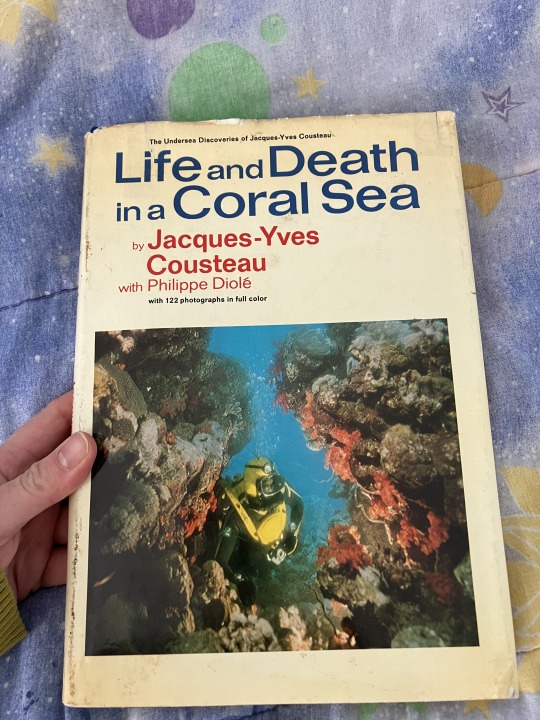

That's right, this story is so old it was told TO Cousteau in the late 1960s! It's the only version of the story he seems to have actually heard and commented on, and it was to deny the monster story.
It strikes me that two of the fearsome feats attributed to the Red Sea Monster— pulling air-filled cans/barrels underwater and destroying a shark cage— are things the shark in Jaws also does. While Peter Benchley’s novel came out in 1974, several years later, he did research sharks when writing it, so I wonder if “pulling barrels underwater” was just a bit of shark lore that was going around in the late 60s.
(At least the way it’s shown in the 1975 movie, the MythBusters showed a great white shark is strong enough to briefly pull barrel floats underwater but not to hold them there.)
The more embellished 2001 article post-dates Jaws and may be inspired by the cage-destruction scene in the film.
The Depths of Lake Tahoe
Apparently, years ago, Cousteau went scuba diving in Lake Tahoe. He emerged from the water shaken, but not with cold. He said, “The world is not ready for what I have seen.” (Jennifer Skene, “Rumors and Truth in Lake Tahoe”)
Another common account of the “secret discovery” story says that it didn’t happen at sea at all, but rather in the depths of landlocked Lake Tahoe, on the California-Nevada border. This is the version of the story most commonly associated with the “the world isn’t ready” quote. The Lake Tahoe version usually keeps things vague, speculating that perhaps Cousteau saw local legendary lake monster Tahoe Tessie OR a layer of hundreds of perfectly-preserved bodies of Chinese railroad workers or mafia victims floating eerily in mid-waters, OR some other mysterious thing too horrific to describe.
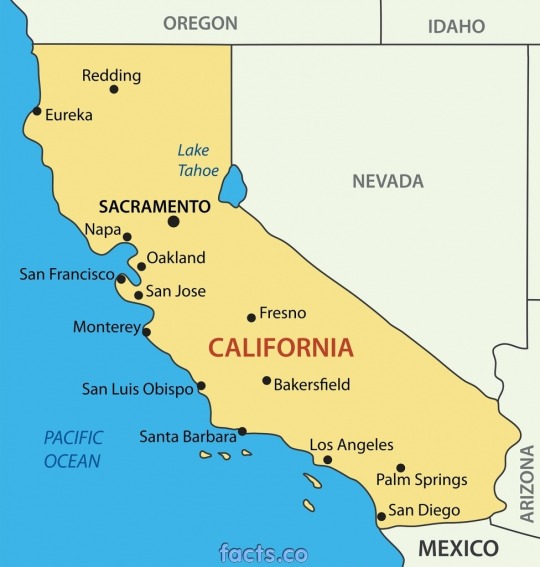
[Unspeakable horrors such as dinky maps found on Bing]
Both Tessie and the well-preserved bodies are urban legends seen discussed elsewhere without the Cousteau connection. Other legends speculate that the lake hides sharks, mermaids, an underground tunnel to Pyramid Lake, a crashed WWII bomber, and a fortune in gold bullion. Just your ISO standard set of underwater legends, really.
However, unlike the Red Sea, there is no evidence that Jacques Cousteau ever visited Lake Tahoe, let alone dove there!
According to other explorers who have explored the lake’s depths, the cold, clear waters do provide eerie visibility to the shipwrecks and sunken trees found there. While people have died in and around the lake and bodies are sometimes found, the more sensational claims of uncanny preservation and bodies eerily floating in mid-water, never rising or sinking, do not fit with Lake Tahoe’s known physical conditions.
The Screams of Hell
Indeed, the French diver Jacques Cousteau was swimming over Cuba some years ago, and he heard screaming noises at the bottom of the ocean. ... And Jacques Cousteau was so shaken up by what he had heard in the seas off Cuba, he never swam there again. ... He heard what he believed to be screaming, shouting, people being tortured, just as the Bible teaches. ("Ex-Catholics for Christ")
Yet another version of the story says that Cousteau heard the sounds of agonized screaming underwater, either while diving himself or recorded on a hydrophone, and possibly considered them the screams of souls in hell. These versions of the story tend to be vaguer, not always naming a time or place when this happened. (That version put it in Cuba, another in Greece, others vaguely “somewhere in the Bermuda Triangle”.)
That's probably because this version is just an adaptation of another, more well-known urban legend about Soviet geologists digging into hell and recording screams that has been repeated in various places since the 1980s. (You can see some of the problems with that story at the site linked.)
(Cousteau did explore Cuba’s waters in the mid-1980s as seen in the documentary, Cuba: Waters of Destiny. You won’t hear any screams from Hell in that documentary, but there is a guest appearance from Fidel Castro!)
Another religion-related urban legend about Jacques Cousteau is that he converted to Islam after discovering the Quran was correct about the mixing of the waters of the Red Sea and Indian Ocean. This isn't true, either. In some places I'd seen this repeated in the same context as an equally-untrue claim that Neil Armstrong converted to Islam after hearing the call to prayer on the moon, and misremembered this as a claim Cousteau had heard the call to prayer underwater for a less-disturbing twist on the idea that the secret discovery was something heard underwater rather than seen, but as far as I can tell, that isn't the case.
Bells in Random Order
Do you know Jacques Cousteau?
Well, they said on the radio
That he hears bells in random order
Deep beneath the perfect water
("Perfect Water")
The Blue Öyster Cult song "Perfect Water" has the lyrics above, which may be a reference to the "secret discovery" legend and specifically the above idea that it was a mysterious sound heard underwater. The band is known for having many references to legends, conspiracy theories, and the supernatural in other songs. "Perfect Water" was on the album Club Ninja, released in December 1985, post-dating Life and Death in a Coral Sea but predating the most famous accounts of the “Well to Hell” story. I can't find any other sources talking about Cousteau and mysterious bells.
This website instead thinks the lyrics are referring to Cousteau's actual descriptions of walruses as making sounds similar to bells in his writings and films. You can hear a walrus making a bell sound here.
Ask Me Anything
During an AMA session on Reddit in 2018, Fabien Cousteau (FCNomad) was asked about three different versions of this story (Djibouti, Lake Tahoe, and Fort Peck Reservoir in Montana.) He seemed most familiar with the Lake Tahoe version.
sotpsean: Hello, Mr Cousteau! It's an honour. When I was a child, family lived in Djibouti, Africa,(my father was a French Foreign Legionnaire). There was a local legend about a "sea monster" living in Lac Goubet. I've heard that your Grandfather might have investigated Lac Goubet in search of this "monster". Locals have thought it to be a prehistoric shark cut off from the sea. I've always wondered if someone might be able to shed light on this subject. Have you heard of this? Thanks for doing this AMA!
FCNomad: Great to chat with you. French foreign legion? Serious stuff. There are legends of "sea monsters" in every body of water out there. Until we explore them we will not know for sure ;-) Lets go see!
[x]
-
HulkVomit: Why did your grandfather never want to dive in Ft Peck Reservoir again? Would you ever come dive in it?
Account-002: I am also REALLY curious about this. My Dad thought it was because if the siltyness of the water, combined with a possible encounter with multiple giant catfish/paddlefish that put him off.
FCNomad: That does seem plausible and potentially sound due to the potential risks. He was focussed on filmmaking and if you can't see anything its hard to tell a visual story…
[x]
-
TeddysGhost: Hi there, I live at Lake Tahoe and it is a common story around here that your grandfather went into the lake once and when he emerged he warned people that the world isn't ready to see what's down there? What do.you know about that story? Is there even a shred of legitimacy and if so what did he see?
FCNomad: Ive heard this rumor as well. We were supposed to investigate on a new TV series but we never got the chance…
[x]
Conclusions
...yeah, all versions of this story sound pretty fake to me. Sorry.
As Fabien says, almost every body of water has sea and lake monster legends attached to it, because the world’s waters really are mysterious, unpredictable, and dangerous. But over time, your local legendary water monster can become familiar, almost a sort of community mascot.
When reading the archives of The Liberator, a famous anti-slavery newspaper published in Boston in the mid-1800s, I found several articles where the writers referred to the New England sea serpent in these kinds of familiar terms, since to Bostonians it was a “local” monster. They even called it “our American sea serpent”— the children and grandchildren of the Minutemen, still defining their identity as Americans, could boast that England didn’t have such a cool monster.
In modern times, of course, a local monster legend can also be a major tourist attraction. Most of the sites I found repeating the Djibouti and Lake Tahoe versions of the story were… travel sites for Djibouti and Lake Tahoe (especially diving travel sites).
To present your local monster story as “verified” by a famous underwater explorer like Jacques Cousteau makes it sound authentic. It certainly spices things up for people planning their vacations, especially divers. And to say that your local monster scared away a globetrotting adventurer like Cousteau who had faced so many other perils all over the world definitely adds to the “local pride” angle. In Djibouti, a French colony that was having a vote in 1967 about whether to become independent, a story about a local monster scaring away a famous Frenchman may have had an appealing nationalist undertone.
The writer for Le Monde de l'un découverte, however, probably just wanted to tell a rip-roaring sea story. The presumably-French writer, writing for a French magazine, would have been writing for an audience who had grown up following Cousteau’s adventures. Perhaps they combed his writings in search of any mention of sea monsters that could fit in their paranormal magazine, found the passage about Djibouti in Life and Death in a Coral Sea, and created a more sensational version that conveniently left out Cousteau’s own debunking. For an audience who had grown up with Cousteau, what could be more exciting than hearing about one more adventure of their late hero, totally new and unseen, and a discovery so shocking it was being kept secret?
And, like I said, it does make for a great story! No wonder it inspired Christophe Bec to write his own version! And with the decades-long tradition of fictional stories parodying and homaging Jacques Cousteau, I can’t blame you if this piece has inspired you to write your own version of the “secret discovery” story— just please, make it clear that your fiction is fiction.
22 notes
·
View notes
Text

Photographer - shy-girl04 : West Wittering, 2015
The sea, once it casts its spell, holds one in its net of wonder forever.
Jacques Cousteau
17 notes
·
View notes
Photo

From birth, man carries the weight of gravity on his shoulders. He is bolted to earth. But man has only to sink beneath the surface and he is free.
- Jacques Yves Cousteau
249 notes
·
View notes
Text

La mer, une fois qu'elle a jeté son sort, nous tient pour toujours dans son filet d'émerveillement.
Jacques Cousteau
24 notes
·
View notes
Text

"breathe"
"Deep-sea camera is built to "breathe" by Aqualung."
October 1952
Quote taken from original text included with the image in the magazine
7 notes
·
View notes
Text
youtube
The Undersea World of Jacques Cousteau: Beneath the Frozen World
4 notes
·
View notes
Text
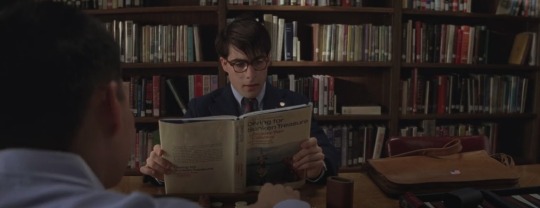
Diving for Sunken Treasure by Jacques Cousteau
Rushmore
13 notes
·
View notes
Text

7 notes
·
View notes
Text

Princess Grace and Prince Rainier with Jacques Cousteau and his wife in 1970.
15 notes
·
View notes
Text

Jacques Cousteau
2 notes
·
View notes


